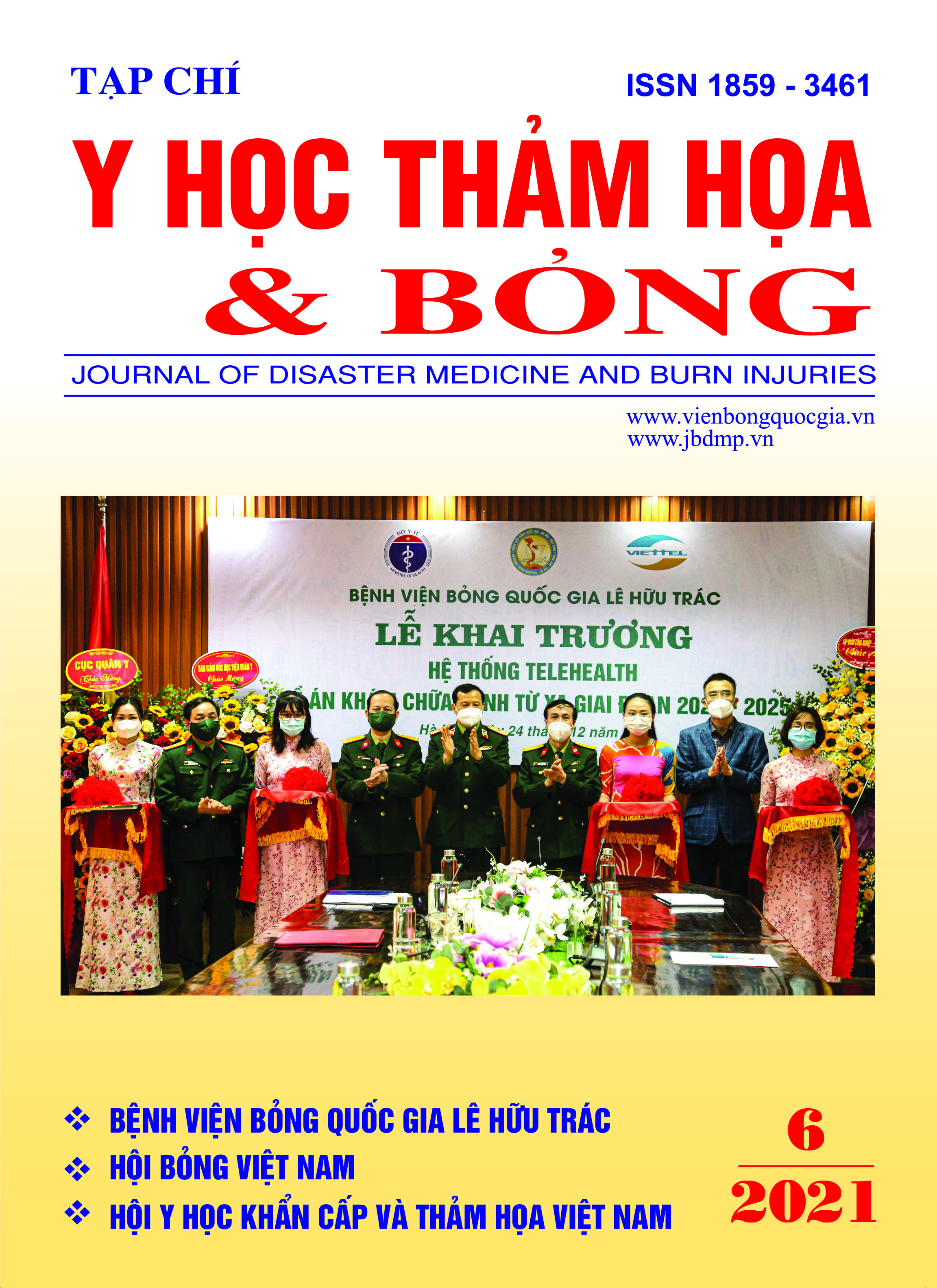Acute toxicity of nano Berberine gel in white mice.
Main Article Content
Abstract
Berberine is isolated from Coscinium fenestratum and some plants in the family Ranunculaceae which has the effect of treating burn wounds. The study determined acute oral toxicity administration in white mice of nano Berberine gel (NBBR) produced by the Le Huu Trac National Burns Hospital.
Research methods: The research method was accorded to the guidelines of the Ministry of Health, World Health Organization. Evaluation of 120 mice, divided into 10 groups, NBBR dosages were gradually increased from 30.9g/kg to 123.96g/kg by oral administration.
Results: No dead mice, no abnormal disorders in movement and digestion; no abnormal histopathological found in livers, spleens and kidneys.
Conclusion: LD50 (Median Lethal Dosage) of NBBR gel had not been determined in white mice by oral administration with the highest dose that could be given 123.96g/kg body weight/day.
Article Details
Keywords
Acute toxicity, white mice, nano Berberine gel (NBBR), pathology
References
2. OECD guideline for testing chemicals, OECD/OCDE 423; Repeated Dose 28-day Oral Toxicity Study in Rodents, Adopted 3rd October 2008
3. Muhammad Ahmed, Aisha Azmat, Acute toxicity (lethal dose 50 calculation) and histopathological effects of methanolic extract of berberis Vulgaris in mice; World J. of Pharmaceutical Research, Nov. 2014, 3 (8), 1439-1448
4. Ministry of Health (2015). Guidelines for preclinical and clinical trials of traditional medicines and drugs from medicinal herbs, Decision 141/BYT-QD.
5. Do Trung Dam (2006), Method of determining acute toxicity of drugs, Medical Publishing House.
6. WHO (2000). Research Guidelines for Evaluating the Safety and Efficacy of Herbal Medicines, Geneva: World Health Organization.
7. Eaton DL, Steven G. Gilbert, Principles of Toxicology. In: D. Kilassen C, editor. Casarett &Doull’s Toxicology the basic science of poisons. 8th ed. New York: MC Grow Hi education; 2013: p. 34-37
8. Hodge A. and Sterner B. (2005).Toxicity classes. In: Canadian center for occupational health and safety. Copy right @1997-2010. Retrieved from (http://www.ccohs.ca/oshanswers/chemicals/id50.htm) 0n 3/5/2010.
9. Shannon Reagan-Shaw, Dose translation from animal to human studies revisited, The FASEB Journal, 2008; vol. 22 no. 3 659-661.
10. National Institute of Medicinal Materials (2006), Methods of studying pharmacological effects of herbal drugs, Science and Technology Publishing House, Hanoi
11. Timothy C. Birdsall ND, Gregory ND (1997), "berberine: Therapeutic potential of an Alkaloid found in several medicinal plant", Alt Med Rev;2 (2): 94-103.
12. Amin AH, Subbaiah TV, Abbasi KM (1969), "Berberine sulfate: antimicrobial activity, bioassay, and mode of action", Can J Microbiol; 15:1067-1076
13. Seyede Zohre Kamrani Rad, Maryam Rameshrad, and Hossein Hosseinzadeh, Toxicology effects of Berberis vulgaris (barberry) and its active constituent, berberine: a review, Iran J Basic Med Sci. , 2017. 20(5): p. 516-529.
14. L. Peychev, Pharmacological investigation on the cardiovascular effects of Berberis vulgaris on tested animals. Pharmacia, 2005. 52: p. 118-121
15. Gardner Z, Michael McGuffin, American Herbal Products Association’s Botanical Safety Handbook. 2nd ed. New York: CRC Press; 2013. 130-132.
16. Kheir MM, Yugang Wang, Hua L, Hu J, Li L, Lei F, et al., Acute toxicity of berberine and its correlation with the blood concentration in mice. Food Chem Toxicol., 2010 April. 48(4): p. 1105-10.
17. Yi J, Xiaoli Ye, Wang D, He K, Yang Y, Liu X, et al., Safety evaluation of main alkaloids from rhizoma coptidis. J Ethnopharmacol., 2013 jan 9, 145 (1): 303-10.
18. Ning N, Yan Zhi Wang, Zou ZY, Zhang DZ, Wang DZ, Li XG, Pharmacological and safety evaluation of fibrous root of rhizoma coptidis. Environ Toxicol Pharmacol., 2015 Jan. 39 (1): p. 53-69.
19. Azmat A and Ahmed M. Hypotensive activity, toxicology and histopathology of different extracts of Berberis vulgaris. Journal of Medicinal Plant Research. 2014; 8(8):378-385.


